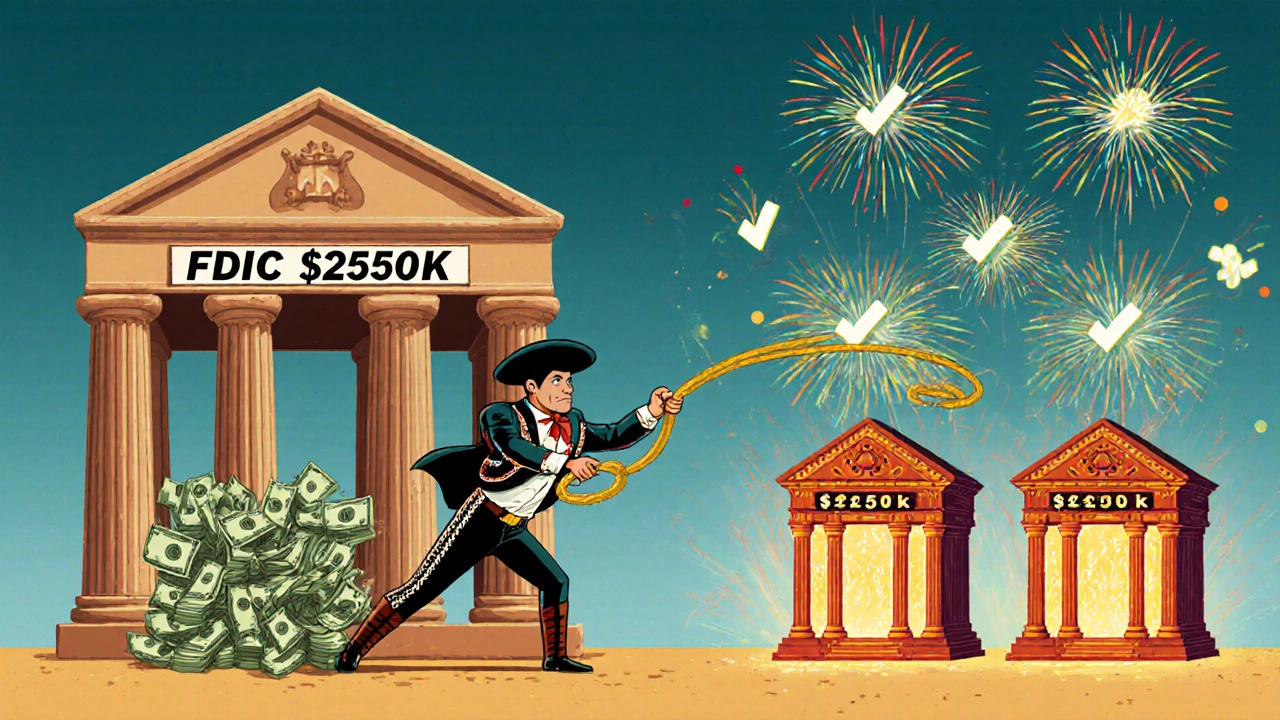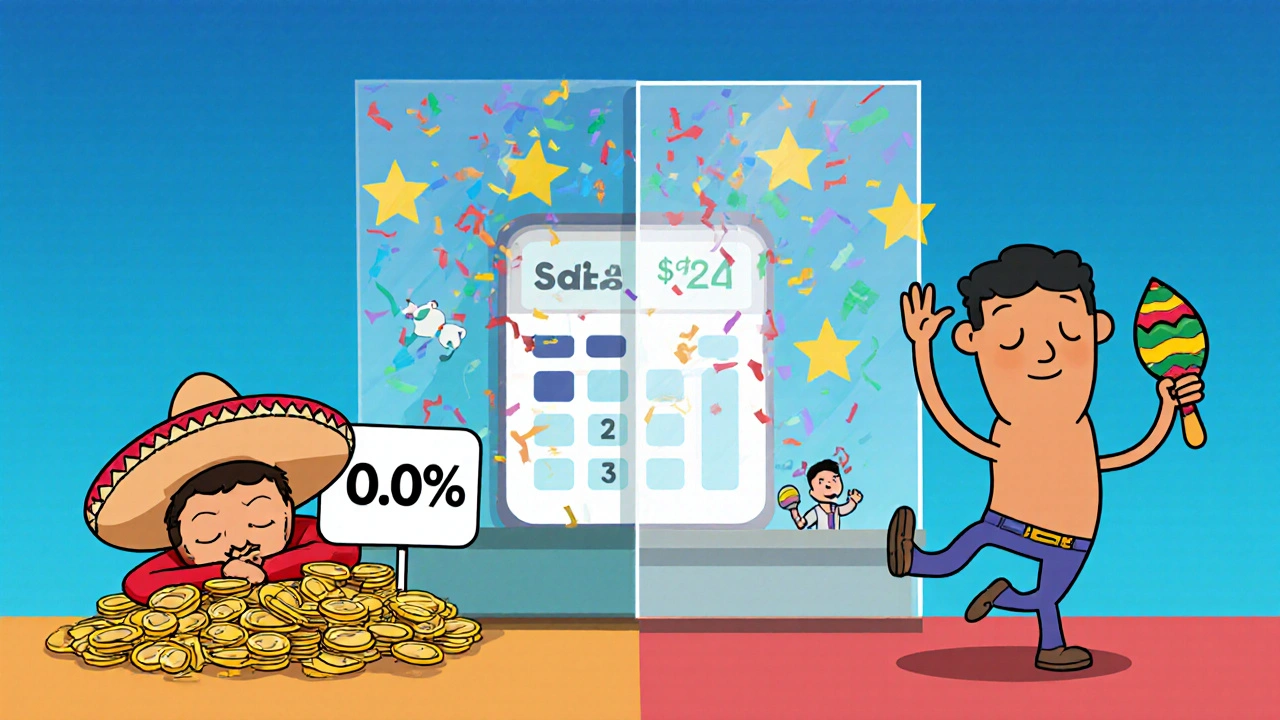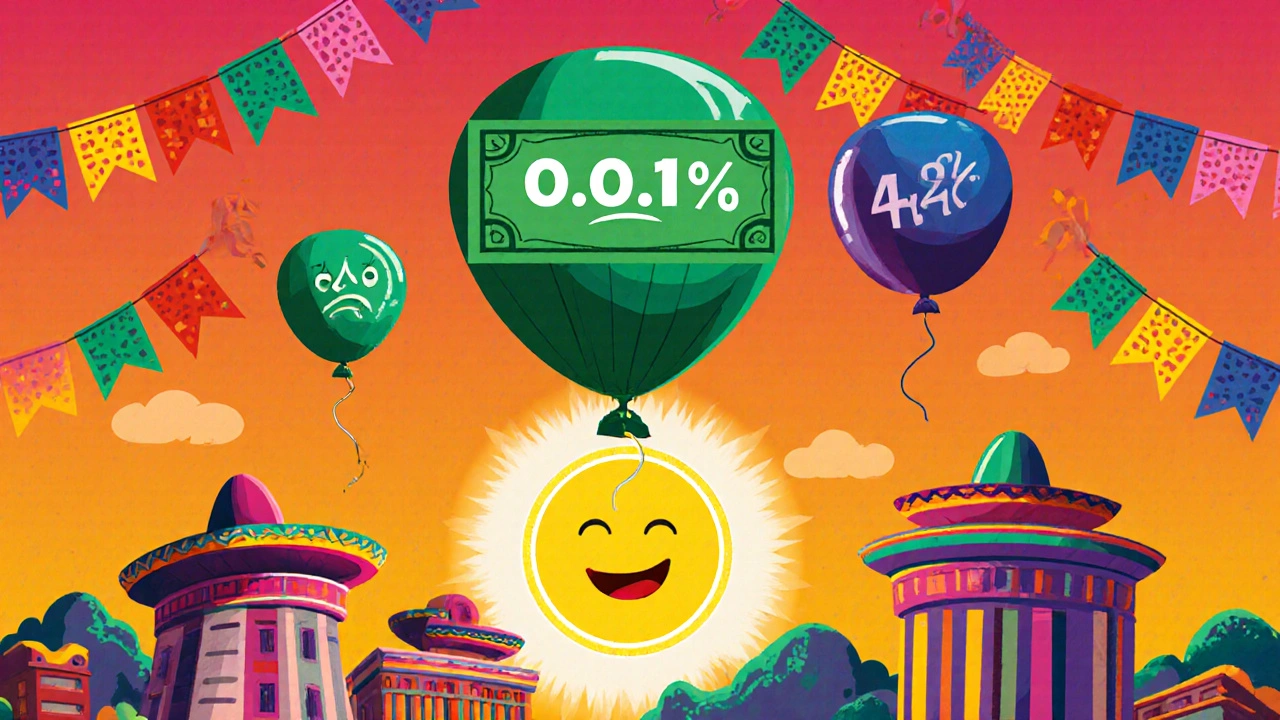Cash Sweep Interest Calculator
Most people don’t realize their brokerage account is probably sitting on thousands of dollars in cash that earns almost nothing. If you’ve ever deposited a dividend, sold a stock, or just kept extra money in your account waiting for the next move, that cash isn’t just sitting there-it’s being swept into a program you didn’t sign up for. And depending on your broker, it could be earning you 0.01% or 4.25%-a difference of over 400 times.
What Exactly Is a Cash Sweep?
A cash sweep is an automatic system brokers use to move uninvested cash from your brokerage account into an interest-bearing account. This isn’t optional. When you open an account with Fidelity, Charles Schwab, SoFi, or most other brokers, you’re automatically enrolled. The goal? Keep your cash safe, liquid, and earning something-even if it’s barely anything.Without a sweep program, your idle cash would sit in a non-interest-bearing account. That’s like leaving money under your mattress. But with a sweep, it’s moved daily-usually at the end of each trading day-into one of two places: a money market fund or an FDIC-insured bank deposit account.
FDIC-insured sweeps are the ones most people care about. They’re backed by the Federal Deposit Insurance Corporation, which protects up to $250,000 per depositor, per bank. But here’s the twist: brokers don’t just use one bank. To give you more coverage, they spread your cash across dozens of partner banks. So if you have $1 million in your account, your broker might split it into four $250,000 deposits across four different banks. That gives you $1 million in FDIC protection, not just $250,000.
How Much Interest Can You Actually Earn?
Interest rates on cash sweeps vary wildly. In 2024, some brokers were paying 0.01%. Others were paying over 4%. That’s not a typo. One broker paid you 424 times more than another.As of January 2025:
- SoFi pays 4.25% APY on its cash sweep program.
- MassMutual pays 3.85% APY but offers up to $5 million in FDIC coverage for joint accounts.
- Charles Schwab pays just 0.01% APY-a rate so low it’s practically a joke.
- Bank of America offers up to 4.75% APY, but only if you’re a Preferred Rewards member with $200,000+ in assets.
- Morgan Stanley offers $1.5 million in coverage, but only if you have $1 million in your account.
That means if you have $10,000 in cash:
- At Schwab: you earn $1 per year.
- At SoFi: you earn $425 per year.
That’s $424 extra in your pocket. Just by switching where your cash sits.
FDIC Coverage: It’s Not Always What You Think
Many people assume their entire brokerage balance is covered by FDIC insurance. That’s not true. The FDIC only insures up to $250,000 per bank. But brokers don’t keep your cash in one bank-they spread it across many. That’s called “sweep aggregation.”MassMutual’s Advantage Cash Sweep program is one of the best in this regard. It uses a network of partner banks to give you up to $2.5 million in coverage for individual accounts and $5 million for joint accounts. That’s huge if you’re holding a lot of cash.
But not all brokers do this. SoFi’s program only offers $250,000 in FDIC coverage per bank, and they don’t spread your cash across multiple banks. So if you have $500,000 in cash with SoFi, only $250,000 is insured. The rest? Not protected.
And here’s the catch: even if your broker claims “up to $2.5 million in coverage,” that doesn’t mean you’ll always get it. If a partner bank fails, the FDIC pays out on a case-by-case basis. It’s rare, but it takes time. You might not get your full balance back immediately.

Why Do Some Brokers Pay So Little?
Why does Schwab pay 0.01% while SoFi pays 4.25%? The answer isn’t about technology or infrastructure-it’s about money.Brokers don’t have to give you all the interest they earn. They keep a chunk. In fact, according to the SEC’s August 2024 Risk Alert, some firms kept 90% of the interest earned on cash sweeps during the 2023 rate peak. That means if your broker earned 4% on your cash, you got 0.4%, and they kept 3.6%.
Dr. Karen Petrou, an economist who testified before Congress in September 2024, called this a hidden $15 billion annual fee on retail investors. It’s not a fee you see on your statement. It’s buried in the interest rate difference.
That’s why lawsuits are piling up. Between June and September 2024, eight class-action lawsuits were filed against Schwab, Morgan Stanley, Wells Fargo, and others. The claim? They breached their fiduciary duty by paying customers rock-bottom rates while keeping the bulk of the interest for themselves.
Some brokers defend this. MassMutual’s Chief Investment Officer said the cost of running a multi-bank sweep network averages $32 per account annually. That’s plausible. But if they’re charging you $32 in hidden interest, they’re still making a profit.
What You Should Do Right Now
Here’s the reality: you don’t have to accept what your broker gives you. You have options.- Check your current sweep rate. Log into your brokerage account. Look for “Cash Sweep,” “Uninvested Cash,” or “Cash Management.” What’s the APY? If it’s below 4%, you’re probably being underpaid.
- Compare your broker to the leaders. SoFi, MassMutual, and Fidelity (for high-balance accounts) are leading the pack. If you’re with Schwab or a discount broker, you’re likely getting the short end of the stick.
- Consider switching. Most brokers let you opt out of the default sweep. You can manually move your cash to a high-yield savings account (HYSA) outside your brokerage. Some HYSAs pay 4.5%+ with full FDIC coverage and no minimums.
- Use a sweep program that actually works for you. If you have over $250,000 in cash, go with MassMutual. If you want simplicity and high rates, SoFi is hard to beat. If you’re a high-net-worth investor, check out Morgan Stanley’s premium program.
One Reddit user, u/InvestorDave87, switched from Schwab’s 0.01% to SoFi’s 4.25% and earned an extra $420 on $10,000 in three months. The transfer took less than a week. No paperwork. No hassle.

The Hidden Downsides
It’s not all sunshine. Cash sweeps have real drawbacks:- Withdrawal delays. If you need to pull out $500,000, your broker might need to recall funds from multiple banks. That can take 2-3 business days.
- Rate changes. Brokers can change rates with as little as 30 days’ notice. You won’t get a warning when they drop your rate from 4.25% to 3.5%.
- Transparency issues. Most brokers don’t clearly explain how much interest they keep. You have to dig into the fine print.
- Not all accounts are equal. If you’re not a top-tier client at Bank of America or Morgan Stanley, you get the lowest tier of service.
And here’s the kicker: a January 2025 survey of 850 financial advisors found that 73% recommend clients keep their cash in a separate high-yield savings account-not in their brokerage sweep. Why? Because the rates are better, the terms are clearer, and the FDIC coverage is simpler.
What’s Changing in 2025?
The industry is under pressure. The SEC proposed new rules in December 2024 called Regulation Best Execution. If passed, brokers will have to prove they’re offering “market-competitive rates” on cash sweeps. That could force Schwab and others to raise their rates by 0.5% to 0.75%.SoFi already responded with a “Rate Match Guarantee”-if another broker offers a higher rate, they’ll match it plus 0.10%. MassMutual raised its rate to 4.50% effective February 1, 2025.
Even the FDIC is stepping in. In January 2025, they launched a pilot program that lets investors verify their multi-bank FDIC coverage in real time. That’s a big deal. Right now, you have to trust your broker that your cash is properly distributed. Soon, you might be able to see it yourself.
Final Thought: Your Cash Is Worth More Than You Think
Cash isn’t just parking space for your money. It’s an asset. And like any asset, it deserves to earn a fair return. If your broker is paying you less than 3%, you’re losing money-literally. Inflation doesn’t care if your cash is in a brokerage account. It still eats away at your purchasing power.Don’t let convenience blind you. You don’t need to be a millionaire to get a good rate. You just need to look.
Are cash sweep programs safe?
Yes, if they’re FDIC-insured. Cash swept into bank deposit accounts is protected up to $250,000 per bank. Brokers that spread your cash across multiple banks can offer higher coverage-up to $5 million in some cases. But if your broker only uses one bank, your coverage is capped at $250,000. Always check how your broker structures its sweep program.
Why is my broker paying me 0.01% interest?
Because they can. Many legacy brokers, like Charles Schwab, have kept sweep rates artificially low for years. They earn far more interest than they pay you-and keep the difference. This practice is under legal scrutiny, and lawsuits are forcing some firms to raise rates. But until regulations change, low rates will persist at some firms.
Can I opt out of a cash sweep program?
Yes. Most brokers allow you to opt out within 10 business days of opening your account. After that, you may still be able to disable it through account settings or by contacting customer service. Once disabled, your cash will sit in a non-interest-bearing account. Most investors choose to keep the sweep but switch to a better provider.
Is a high-yield savings account better than a cash sweep?
Often, yes. Many HYSAs offer higher rates than brokerage sweeps-with simpler FDIC coverage (one bank, full $250,000 protection). They also tend to have fewer restrictions on withdrawals. The trade-off is convenience: you’ll need to manually transfer money between your brokerage and savings account. If you value ease, a good sweep program may still win.
What’s the difference between a money market fund sweep and an FDIC sweep?
Money market fund sweeps invest your cash in short-term debt securities like Treasury bills. They’re not FDIC-insured, but they’re considered very low-risk. FDIC sweeps put your cash into bank deposits, which are insured up to $250,000 per bank. If safety is your top priority, FDIC sweeps are the better choice.
Will my cash sweep rate change if the Fed cuts rates?
Yes. Cash sweep rates are tied to the federal funds rate. When the Fed raises rates, sweep rates usually rise. When the Fed cuts, they fall. But brokers don’t always pass along the full rate change. Some hold back, especially if they’ve been paying low rates for a long time.
How do I know if my broker is spreading my cash across multiple banks?
Check your account agreement or contact customer service. Brokers that offer expanded FDIC coverage (like MassMutual or Northwestern Mutual) will clearly state how many banks they use. If your broker doesn’t mention multi-bank coverage, assume you’re only protected up to $250,000 total.

RAHUL KUSHWAHA
November 16, 2025 AT 10:12Julia Czinna
November 17, 2025 AT 01:44Dave McPherson
November 17, 2025 AT 23:00Laura W
November 18, 2025 AT 12:54